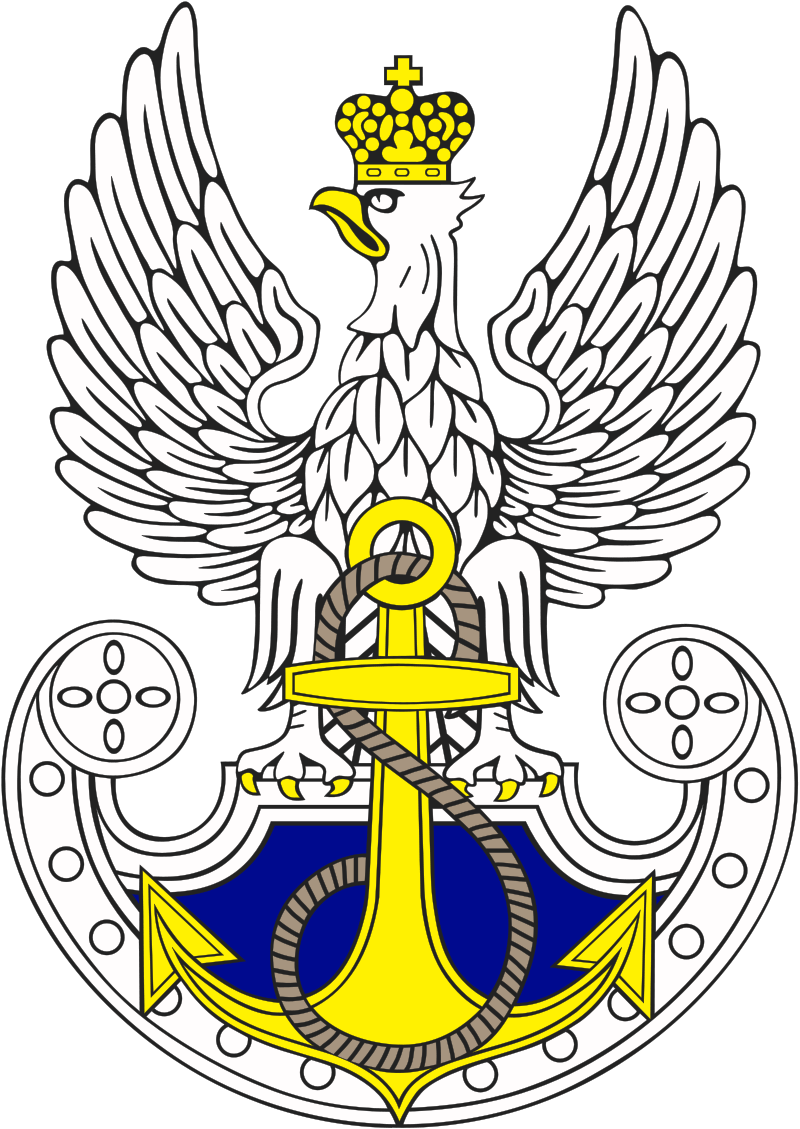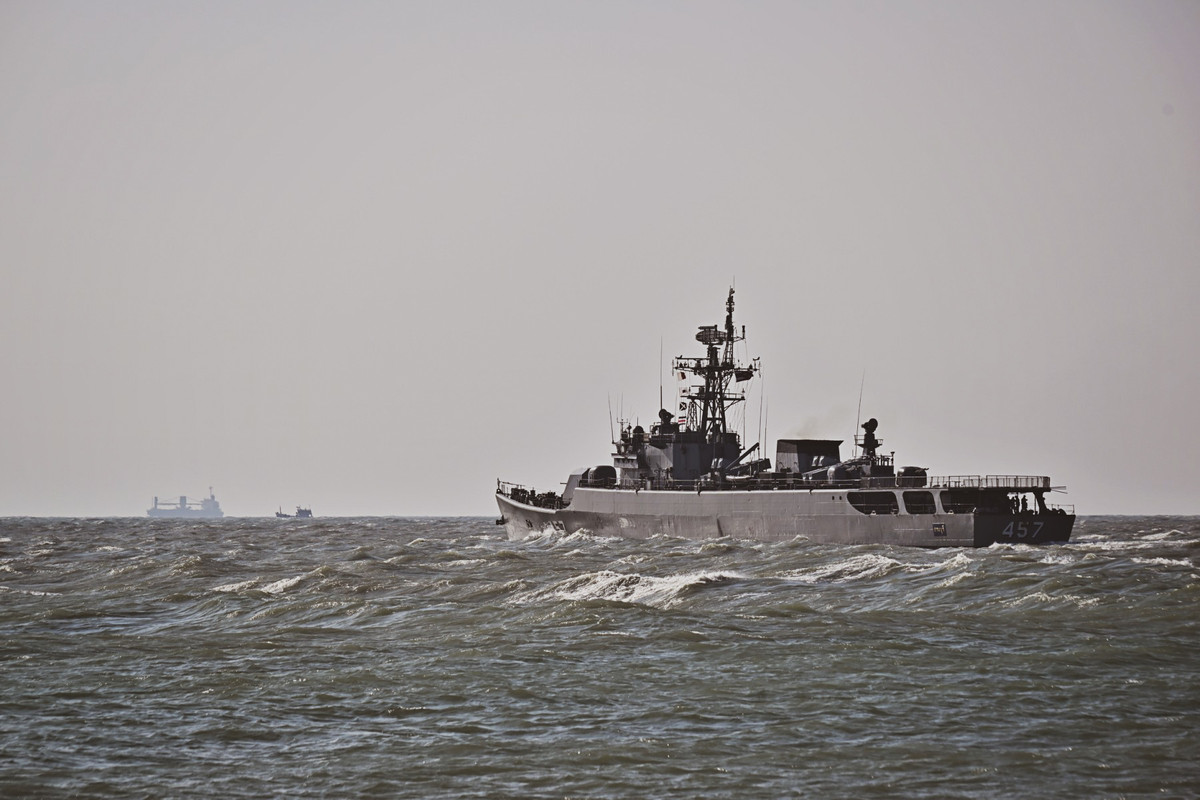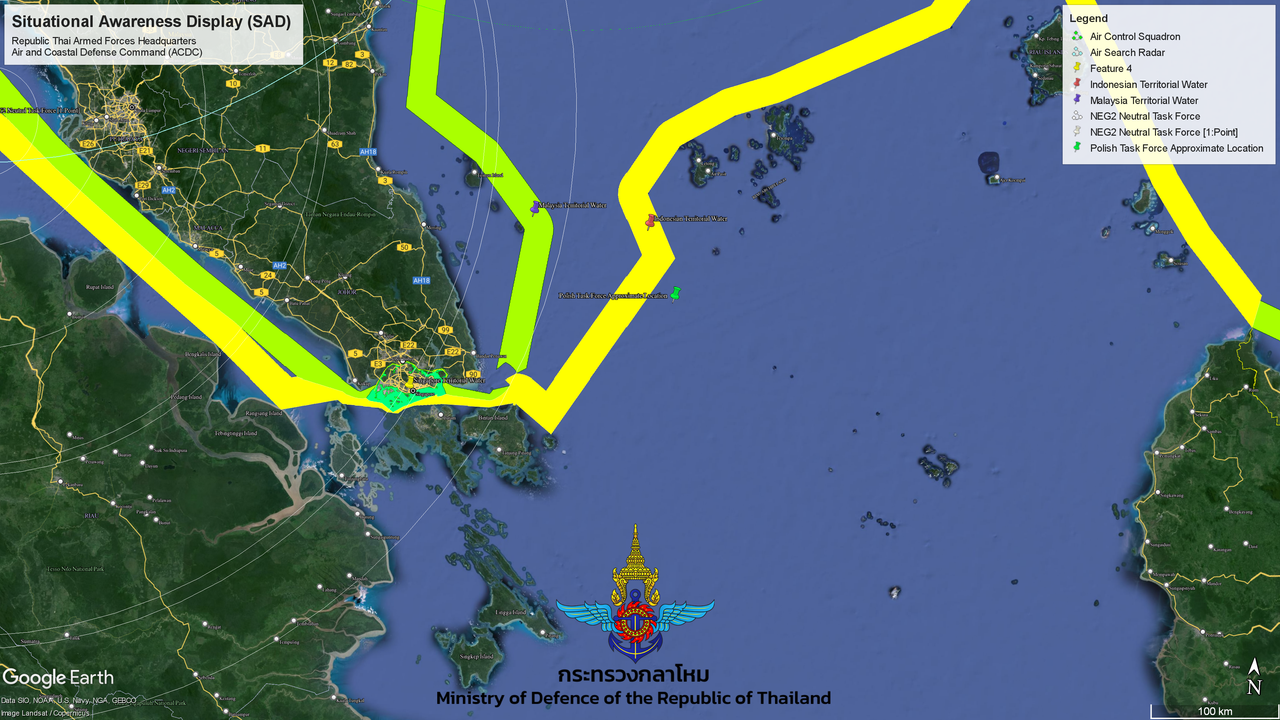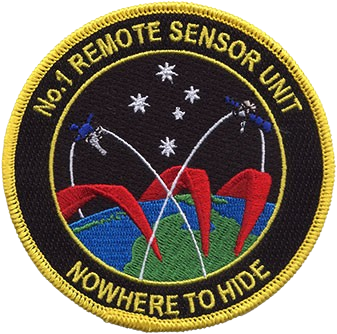- May 22, 2020
- 2,722
Operation Amber Sentinel
Operacja Bursztynowy Strażnik
Secured and Encrypted TOP SECRET by POSP
Continued from: Operation Watchtower
Operacja Bursztynowy Strażnik
Secured and Encrypted TOP SECRET by POSP
Continued from: Operation Watchtower

| 
| 
|
Background:
With the rising tensions between Thailand and Myanmar/Burma, Poland initiated high level talks between the United States of America and the United Kingdom of Great Britain and Northern Ireland to begin working on a diplomatic solution towards the developing crisis. With the combined effort of the United States, United Kingdom, and Poland working on a diplomatic solution, it was decided that having a military presence in the area would be best response in case things went sour in the region.
Objective:
1. Regroup at Pearl Harbor with American and British forces
2. Perform training exercises while monitoring the situation developing in Thailand/Myanmar
3. Promote friendly relations between the United States, the United Kingdom, and Poland during deployment to Pearl Harbor
Task Force Amber Sentinel
| Ship Class | Vessel Name | Compliment | Home Port | Location |
| Dokdo-class Amphibious Assault Ship | OKP Huragon | 330 | Gdynia-Oksywie | -23.47609, 166.25266 |
| Celestial-class Frigate | OKP Mgławica | 140 | Świnoujście | -23.47609, 166.25266 |
| Celestial-class Frigate | OKP Galaktyka | 140 | Świnoujście | -23.47609, 166.25266 |
| Celestial-class Frigate | OKP Kwazar | 140 | Świnoujście | -23.47609, 166.25266 |
| Celestial-class Frigate | OKP Gwiazda | 140 | Świnoujście | -23.47609, 166.25266 |
| Celestial-class Frigate | OKP Kometa | 140 | Świnoujście | -23.47609, 166.25266 |
| Celestial-class Frigate | OKP Pulsar | 140 | Świnoujście | -23.47609, 166.25266 |
| Celestial-class Frigate | OKP Gwiazdozbiór | 140 | Świnoujście | -23.47609, 166.25266 |
| Sohn Won-Yil-Class Submarine | OKP Orzel | 27 | Gdynia-Oksywie | -23.47609, 166.25266 |
| Sohn Won-Yil-Class Submarine | OKP Sęp | 27 | Gdynia-Oksywie | -23.47609, 166.25266 |
| Amsterdam-class Replenishment Ship | OKP Baltyk | 160 | Gdynia-Oksywie | -23.47609, 166.25266 |
| Mercy-class Hospital Ship | OKP Miej Litość | 1,277 | Gydania | -23.47609, 166.25266 |
| Yi-Sun-Sin-class Destroyer | OKP Dąbie | 300 | Gdynia-Oksywie | -23.47609, 166.25266 |
| Yi-Sun-Sin-class Destroyer | OKP Jamno | 300 | Gdynia-Oksywie | -23.47609, 166.25266 |
| Lublin-class Minelayer/Landing Ship | OKP Lublin | 37 | Świnoujście | -23.47609, 166.25266 |
Task Force Amber Sentinel Air Wing
| Squadron | Aircraft | Number of Aircraft | Personnel |
| 1st Helicopter Squadron | PZL W-3W | 4 | 16x Pilots; 8x Gunner |
| 2nd Helicopter Squadron | PZL W-3W | 3 | 12x Pilot; 6x Gunner |
| 3rd Helicopter Squadron | PZL W-3A | 4 | 16x Pilots |
| 1st SAR Squadron | PZL W-3RM | 3 | 12x Pilots; 6x Crew Master; 12x Rescue Divers |
Task Force Amber Special Forces Detachment
| Unit | Compliment | Vehicles |
| Formoza; Section A | 384x Soldiers; 9x Military Working Dogs | |
| GROM; A Section | 50x Personnel; 5x MWD | 10x Skorpion 3(borrowed from Royal Land Forces); 3x PZL SW-4; |
| Royal Medical Service | 250(25x Doctors; 25x Surgeons; 175x Nurses; 25x Anesthesiologists) | 10x KTO Rys(Borrowed from Royal Land Forces) |
Details
OKP Huragon: Fully Fueled; Aviation Reserves fully fueled; non-perishable and perishable food/water for a 3 month journey; Standard Armaments: 2x Goalkeeper CIWS; 1x RIM-116 Launcher(21x Missiles); Onboard Armamnets: 150x FB Beryl B and associated ammunition; 150x WIST-94 pistol and associated ammunition
Decoys: ESM/ECM:SLQ-200(v)5K SONATA; Chaff launcher
Aircraft: 12x PZL W-3W helicopters and all of the necessary armaments and equipment; 3x PZL W-3RM and all of the necessary equipment
Boats: 20x RHIBS(with 12.7mm machine gun mounted)
Celestial-class Frigates: Fully fueled; Maritime reserves fully fueled; non-perishable and perishable food/water for 3 month journey; Standard Armaments:
32-cell Mk 41 VLS: x5 RUM-139C (Mrk 54 Torpedo); x36 (Quad packed) RIM-162A ESSM; x3 RGM/UGM-109E Tomahawk Land Attack Missile; x15 RGM/UGM-109B Tomahawk Anti-Ship Missile;
Standard armaments including: x2 Mk 141 canister Harpoon missile launcher (x8 missiles); x1 Mk 32 triple torpedo launcher + 10 Mark 50 torpedoes stored; x2 Mk44 Bushmaster II 30-mm chain guns; x1 SeaRAM CIWS; x1 Mk 110 57mm gun; x4 crew-served .50 caliber Browning M2 machine guns; x2 crew-served M240B 7.62 mm machine guns;
Decoys: x2 Mk 36 SRBOC chaff rapid decoy launchers;
Boats: 2x RHIB(With 12.7mm Machine Gun mounted)
Sohn Won-Yil-class Submarines: Fully fueled; Batteries fully charged; Perishable food and water for 2 month journey; 8x Torpedo Tubes(4 sub harpoon missile capable) + 38 533mm Torpedos and 12 sub Harpoon missiles; 27x FB Beryl B Rifles and associated ammunition; 27x WIST-94 pistols and associated ammunition
Equipment: SPHINX-D Radar System(High Pulse Radar and very low power LPI transmitter)
Amsterdam-class Replenishment Tanker: Fully Fueled, Aviation reserves fully fueled, 40 tons of non-perishable food, 100 tons of potable water, forty tons of medical supplies, full reserve tanks of diesel fuel, full reserve tanks of aviation fuel, and 20 tons of ammunition; Non-perishable food for 3 month journey for crew; Crew well rested, fed, and properly uniformed
Armament: 1x 30mm Goalkeeper CIWS; 6x crew-served M2-HB 12.7mm HMG
Small Arms: 50x FB Mini-Beryl, 150x Fully loaded magazines; 50x MAG 98C Pistols, 100x MAG 98C fully loaded magazines
Decoys: 4x Mark 36 SRBOC chaff; 1x Nixie towed torpedo decoy system
Mercy-class Hospital Ship: Fully Fueled, Aviation Reserves fully fueled; Non-perishable food and water for 3 month journey; Crew well rested, fed, and properly uniformed
Small Arms: 100x FB Mini-Beryl; 300x Fully loaded magazines, 100x MAG 98c pistols, 200x MAG 98c Fully loaded magazines
Complement: 63x Civilian Sailors; 1,214 Royal Sailors
Aircraft: 2x PZL W-3A Sokol Helicopter
Vehicles: 2x RHIBs
Yi Sun-sin-class Destroyer: Fully Fueled, Aviation Reserves fully fueled; Non-perishable food and water for 3 month journey, Crew well rested, fed, and properly uniformed;
Armament: 32-cell Mk-41 VLS: 32x SM-2 Block IIIA; 1x 30mm Goalkeeper CIWS; 1x RAM Block 1 CIWS; 8x SSM-700K Haeseong Anti-ship Missile
Complement: 300x Royal Sailors
Small Arms: 100x FB Mini-Beryl; 300x Fully loaded magazines; 100x MAG 98C Pistols, 200x MAG 98c Fully loaded magazines
Aircraft: 2x PZL W-3A Sokol Helicopter
Vehicles: 2x RHIBs
Sailors: Wearing appropriate professional soldier uniform(Blue pants, jacket, white shirt, blue cap, black boots) all bearing the insignia of the Poland and the Royal Navy
Formoza:
Formoza Rifleman(312 Personnel): 1x Field Uniform Pattern .93(Pantera Camouflage and boots and gloves) with Polish flag patch, 1x Helmet Model 2005(Pantera Camouflage Cover), 1x KWM-01 Plate Carrier(Pantera Pattern), 1x HK416D10RS(w/ suppressor, IR illuminator with flashlight, holographic sight, and foregrip), 7x HK416D10RS magazines(1 loaded), 1x MAG 98C Pistol, 3x MAG 98C magazines(one loaded), 1x Offensive grenades, 2x Flashbang grenades, 1x White Smoke grenade, 1x Blue Smoke grenade, 1x Radmor 3501 handheld radio, 1x AN/PVS-15 Night Vision Binoculars, 1x IFAK, 1x Assault Pack per Operator
Formoza Marksmen(24 Personnel): 1x Field Uniform Pattern .93(Pantera Camouflage and boots and gloves) with Polish flag patch, 1x Helmet Model 2005(Pantera Camouflage Cover), 1x KWM-01 Plate Carrier(Pantera Pattern), 1x SR-25(w/ 1x medium range optic, 1x Bipod), 8x SR-25 Magazines(1 loaded), 1x MAG 98C, 3x MAG 98C magazines(1 loaded), 1x Offensive grenade, 1x Defensive grenade, 1x White Smoke grenade, 1x Blue Smoke grenade, 1x Radmor 3501 handheld radio, 1x AN/PVS-15 Night vision binoculars, 1x IFAK, 1x Assault Pack per Operator
Formoza Gunner: 1x Field Uniform Pattern .93(Pantera Camouflage and boots and gloves) with Polish flag patch, 1x Helmet Model 2005(Pantera Camouflage Cover), 1x KWM-01 Plate Carrier(Pantera Pattern), 1x FN Minimi 5.56(w/ 1x Trijicon ACOG, 1x suppressor, 1x Bipod), 3x 100 round belts(1 loaded, 1x MAG 98C, 3x MAG 98C magazines(1 loaded), 1x Radmor 3501 handheld radio, 1x AN/PVS-15 Night vision binoculars, 1x IFAK, 1x Assault Pack per Operator
Formoza Grenadier: 1x Field Uniform Pattern .93(Pantera Camouflage and boots and gloves) with Polish flag patch, 1x Helmet Model 2005(Pantera Camouflage Cover), 1x KWM-01 Plate Carrier(Pantera Pattern), 1x HK416D10RS(w/ suppressor, IR illuminator with flashlight, holographic sight, and 40mm grenade launcher), 7x HK416D10RS magazines(1 loaded), 1x MAG 98C Pistol, 3x MAG 98C magazines(one loaded), 4x HE 40mm round, 2x 40mm Illumination round(1x white, 1x Red), 2x 40mm CS round, 1x Radmor 3501 handheld radio, 1x AN/PVS-15 Night Vision Binoculars, 1x IFAK, 1x Assault Pack per Operator
JW GROM:
Apparel: 1x Helm wz.2005; 1x field uniform wz. 93(Pantera Camouflage); 1x dual tube Night Vision; 1x HK416-D14.5RS, 5x Fully loaded magazines; 1x Glock 19x, 2x Fully loaded magazines; 1x Team-level Radio system; 1x First Aid Kit; 1x MP-5 Gas Mask
Weapons: 1x HK416D14.5RS, 5x Fully loaded magazines; 1x Glock 17, 2x Fully loaded magazines; 1x FRGO-88 Grenade, 1x UGD-200 Smoke Grenade; 1x military knife wz. 98
Note: 1 man out of 10 carries 1x SR-25 Marksman Rifle and 5x fully loaded magazines; 1 man out of 10 has a military working dog and equipment to utilize the dog such as leash, muzzle, treats, and ball toy. Military Working Dog wears kevlar dog vest that has carry handle and leash attachment point.
Royal Medical Service:
Apparel: 1x Helm wz.2005; 1x field uniform wz. 93(Pantera Camouflage); 1x dual tube night vision; 1x Arm Band Bear a red cross; 1x Medical Field Bag(full of first aid and field surgery supplies)
Weapons: 1x WIST 94 pistol; 2x fully loaded magazines
PZL W-3A:
Fully fueled; 2x Pilots, fully rested and properly uniformed; compasses and all necessary maps/equipment; all necessary onboard equipment inspected to be within working order; Full loadout of standardized equipment and countermeasures for PZL W-3A
Deployment
Having deployed from the Mediterranean Sea, Task Force AmberSentinel would have proceeded through the Suez canal and carefully moved through the Indian Ocean through the Timor Sea and the Arafura Sea before moving into the Coral Sea and then into the Pacific Ocean. During this transit time, the ships would carefully navigate to ensure they avoided territorial waters of nations. The ships would maneuver so the two submarines would be submerged at the lead, approximately two miles ahead of the rest of the fleet and two miles apart from each other. The Celestial-class Frigates would form a screen around the OKP Huragon, which would be located at the center of the formation while the OKP Baltyk would be half a mile to the rear of the OKP Huragon. Each Celestial-class frigate would maintain a mile distance from the center of the flotilla. The vessels would not exceed the speed of 15 knots.
Each ship would carefully monitor their passive radar and sonar terminals to ensure that they did not collide with any obstacles, man-made or natural, during this transit across the oceans. After crossing the equator for the first time in the Indian Ocean, each ship would place themselves in a holding pattern and perform the standard line-crossing ceremony where members who had not crossed the equator before were dunked into the ocean four times before resuming the trip. During the trip, each ship would ensure they were fueled and provisions stocked by the OKP Baltyk, each taking great care to ensure they would not collide with each other or with other members of the task force. Upon arriving at Pearl Harbor the commander of the Task Force, Komandor Anatol Pruszkowski would contact the port authority of the harbor and announce themselves and ask for permission to dock.
Odinson
Last edited:






